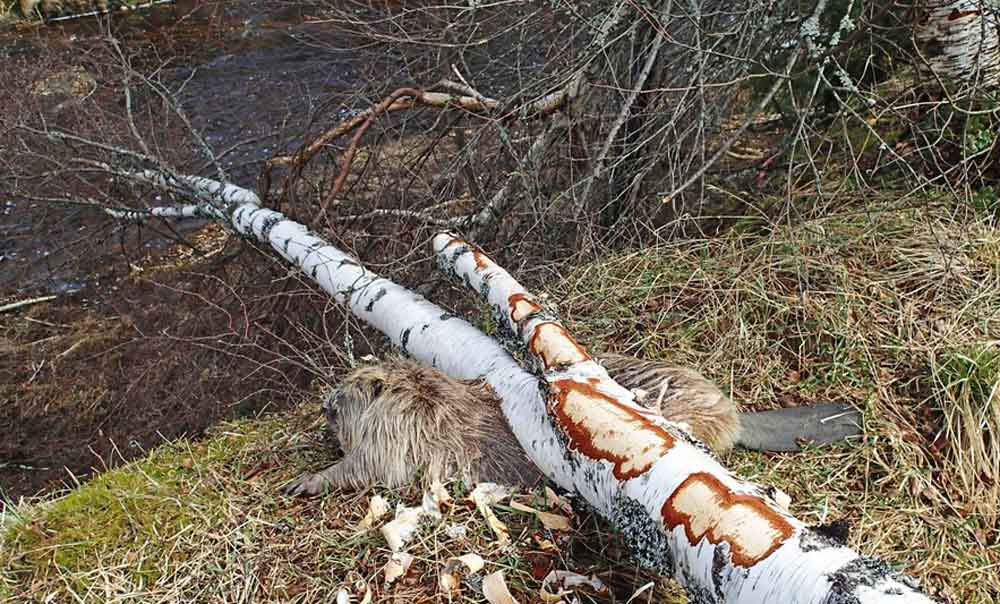Long-term readers might recall the book manuscript – written many years ago now – in which I wrote a whole load of text on death, disease and disaster in the animal world. That book had to be abandoned, but every now and again I look at it and attempt to salvage various short sections. And thus, here we are today…
Caption: lammergeier Gypaetus barbatus, killed in an avalanche, presumably in the Himalayas. Image: (c) Eric Dragesco/Ardea London/Henny (1990).
When rocks or blocks of ice fall down hills, cliffs or mountains, or when the roofs of caves collapse, animals may be unlucky enough to be in the way. Such hazards present themselves to animals that dwell in mountainous environments, near cliffs or in caves. Laidler & Laidler (1992) figured a Takin Budorcas taxicolor* killed by rocks whose movement down a hillside was triggered by an earthquake. An adult Lammergeier Gypaetus barbatus killed in an avalanche was figured by Henny (1990). At the caves of Mount Elgon, an extinct volcano on the Kenyan/Ugandan border, elephants and other animals walk deep underground to mine and eat the sodium-rich soil. In 1981 the roof of one of the caves collapsed, ostensibly the result of undermining by the elephants. There is speculation that some or many elephants were killed (Sutcliffe 1986).
* I’m actually not sure which Budorcas the specimen might be. According to the Groves and Grubb taxonomy, also used by José Castelló in Bovids of the World, there are several takin species.
Caption: elephants are sometimes killed by falling or toppled trees. This photo of a deceased bull is from Douglas-Hamilton & Douglas-Hamilton (1975).
Elephants are also known to have died after the trees they have been destroying have fallen on top of them: Douglas-Hamilton & Douglas-Hamilton (1975) figured a particularly spectacular case where a bull African bush elephant Loxodonta africana was killed when a large, old baobab tree fell on top of it. The tree had been weakened by the actions of many elephants over some considerable span of time. A photo of a poor baby elephant killed by a tree in 1968 can be seen here.
Caption: look carefully — there’s the skeleton of a horse in there, seemingly killed by this falling tree. Image: (c) Lizzy Peat.
Caption: close-up of the remains… Image: (c) Lizzy Peat.
A particularly unfortunate case in the files of accidental death concerns the killing of the very last Pyrenean ibex Capra pyrenaica pyrenaica by a falling tree in Huesca Province, Spain, in 2000 (Anon. 2000). The animal’s skull was crushed in the accident. A rare photo of a free-living domestic horse Equus caballus – a New Forest pony – killed by a falling tree in southern England was passed to me by my friend Lizzy Peat, and is reproduced here (above). Creative googling results in the discovery of various photos of deer (of various species) killed by falling trees.
Caption: deer (a whitetail, at left, and a wapiti at right) killed by falling trees. Both images come from this hunting site; there are other images too.
And it is of course relatively well known that beavers are sometimes killed by falling trees. Kile & Rosell (1996) reported seven cases of beaver death (concerning both Castor fiber and C. canadensis) caused by tree fall as well as several additional cases where beavers were found trapped by fallen trees, mostly by the hindfoot, but still alive. Exactly how much of a risk this really is to healthy beaver populations remains unknown: it seems to be rare enough that it isn’t ordinarily an issue.
Caption: unfortunate European beaver killed by a silver birch, one of several images online of beavers killed by trees. Image: Beate Strøm Jahansen, from here.
Refs - -
Anon. 2000. Getting the goat: falling tree kills last Pyrenean ibex. Fortean Times 136, 20.
Henny, C. J. 1990. Mortality. In Newton, I. (ed) Birds of Prey. Merehurst, London, pp. 140-151.
Kile, N. B. & Rosell, F. 1996. European beaver, Castor fiber, pinned by a felled tree. Canadian Field-Naturalist 110, 706-707.
Laidler, K. & Laidler, L. 1992. Pandas – Giants of the Bamboo Forest. BBC Books, London.
Sutcliffe, A. J. 1986. On the Track of Ice Age Mammals. British Museum (Natural History), London.










